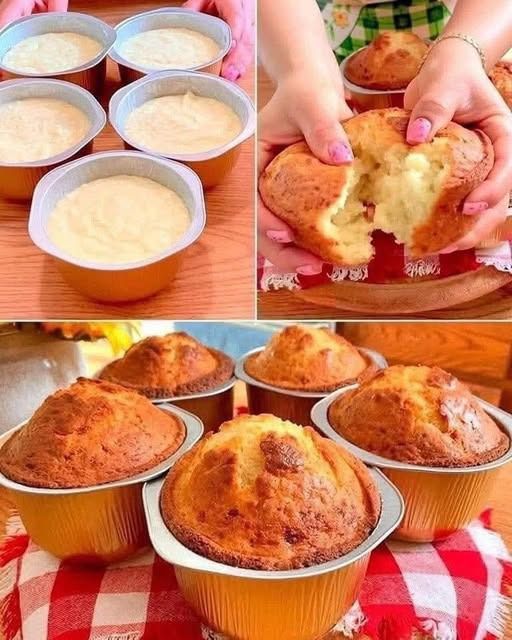Introduction
Shortbread, a classic Scottish biscuit, is beloved for its buttery, crumbly texture and subtly sweet flavor. Making it at home is surprisingly easy and rewarding, offering a delightful treat perfect for afternoon tea, holiday gatherings, or a simple indulgence. This guide will walk you through creating the perfect homemade shortbread, from understanding the key ingredients to mastering the baking technique.
Making Homemade Shortbread: A Step-by-Step Guide
Key Ingredients for Perfect Shortbread
The beauty of shortbread lies in its simplicity. You only need a few ingredients, but the quality of each one matters significantly.
- Butter: Unsalted butter is crucial. The higher the quality, the better the flavor. European-style butter, with its higher fat content, produces an exceptionally rich shortbread. Make sure it’s softened to room temperature for easy mixing.
- Flour: All-purpose flour is commonly used, but for a more tender crumb, consider using cake flour or a blend of all-purpose and rice flour. Rice flour adds a delicate, melt-in-your-mouth quality.
- Sugar: Granulated sugar is traditional, but powdered sugar (also known as icing sugar or confectioner’s sugar) can be used for a slightly smoother texture. A combination of both is also a popular choice.
- Salt: A pinch of salt enhances the sweetness and balances the flavors.
The Basic Shortbread Recipe
Here’s a classic shortbread recipe to get you started:
- Cream the Butter and Sugar: In a large bowl, cream together the softened butter and sugar until light and fluffy. This step is crucial for incorporating air and creating a tender crumb. Use an electric mixer or do it by hand.
- Add the Flour and Salt: Gradually add the flour and salt to the butter mixture, mixing until just combined. Be careful not to overmix, as this can develop the gluten in the flour and result in a tough shortbread.
- Form the Dough: The dough will be crumbly at first. Gently bring it together with your hands to form a smooth ball. If it’s too dry, add a teaspoon of cold water at a time until it comes together.
- Shape the Shortbread: There are several ways to shape shortbread:
- Press into a Pan: Press the dough evenly into an ungreased 8-inch square or round baking pan. Prick the surface with a fork to prevent it from puffing up during baking.
- Roll and Cut: Roll the dough out on a lightly floured surface to about 1/2 inch thickness. Use cookie cutters to cut out shapes.
- Pinch and Shape: Roll the dough into a log, wrap it in plastic wrap, and chill it for at least 30 minutes. Then, slice into rounds and bake.
- Bake the Shortbread: Bake in a preheated oven at 325°F (160°C) for 20-30 minutes, or until lightly golden brown.
- Cool and Cut: Let the shortbread cool in the pan for a few minutes before cutting it into squares, fingers, or wedges. Transfer to a wire rack to cool completely.
Tips for the Best Homemade Shortbread
- Use Cold Butter (for some recipes): While softened butter is often recommended, some bakers prefer using cold butter, cut into cubes. This creates a very short and crumbly texture. If using cold butter, work quickly to incorporate it into the flour and sugar before it warms up too much.
- Don’t Overmix: Overmixing develops gluten, leading to a tough shortbread. Mix only until the ingredients are just combined.
- Prick the Dough: Pricking the surface of the shortbread with a fork before baking prevents it from puffing up and helps it bake evenly.
- Bake Low and Slow: Baking at a lower temperature for a longer time ensures that the shortbread bakes evenly and develops a delicate, golden brown color.
- Cool Completely: Allow the shortbread to cool completely before cutting and serving. This allows it to firm up and prevents it from crumbling.
- Dust with Sugar (Optional): Dust the warm shortbread with granulated or powdered sugar for an extra touch of sweetness and elegance.
Variations on the Classic Shortbread Recipe
Once you’ve mastered the basic shortbread recipe, feel free to experiment with different flavors and additions:
- Lemon Shortbread: Add lemon zest to the dough for a bright, citrusy flavor.
- Chocolate Chip Shortbread: Stir in mini chocolate chips for a decadent treat.
- Lavender Shortbread: Infuse the butter with dried lavender for a floral and aromatic twist.
- Rosemary Shortbread: Add finely chopped fresh rosemary for a savory and herbaceous flavor.
- Ginger Shortbread: Add ground ginger and a pinch of cloves for a warm and spicy flavor.
Conclusion
Homemade shortbread is a simple yet elegant treat that’s perfect for any occasion. By using high-quality ingredients and following these tips, you can create a buttery, crumbly, and utterly delicious shortbread that will impress your friends and family. So, get baking and enjoy the sweet satisfaction of homemade goodness!
